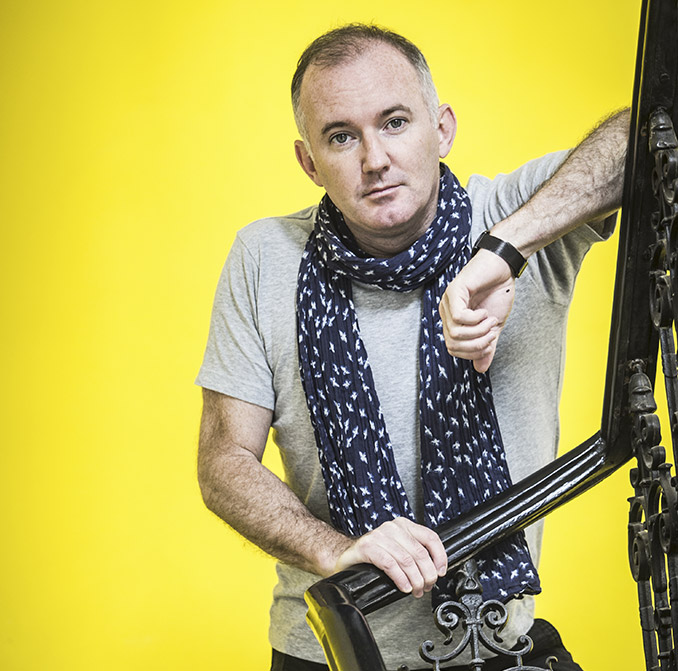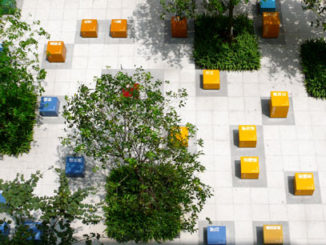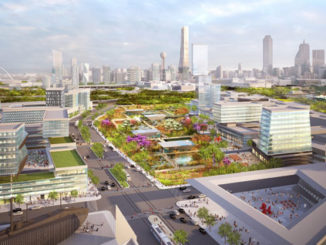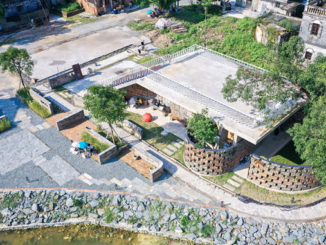
WLA | Who is Martin Barry?
Martin Barry (MB) | I am a landscape architect and the Founder and Chairman of reSITE, which is a nonprofit organization based in Prague that is focused on exchanging ideas for more lovable and livable cities. We promote and protect public space and civic architecture. I am also the co-founder and CEO of City Crew, a creative consultancy for cities and real estate investors. I recently moved to Prague fulltime from NYC, where I was an Associate at W Architecture and Landscape Architecture for about 8 years and led multi-disciplinary teams on projects in North America, Europe, Asia and the Middle East. I’m proud of being a landscape architect. I recently won the President’s Award for Community Service from the American Society of Landscape Architects (ASLA), and my projects at W Architecture under Barbara Wilks have received dozens of design awards in North America. I’m a Fulbright Scholar and a Fellow with the Design Trust for Public Space in New York.
WLA What do like about being a landscape architect?
MB | I love the diversity of the profession. I mean, look at me now – I practiced landscape architecture for 8 years at W Architecture in NYC, then decided that I wanted to run a nonprofit organization that deals with architecture and cities, with a focus on the urban landscape and public space. And, it’s somehow working. As a landscape architect, I’m really interested in human-centered design. But, design that simultaneously benefits the ecology, economy, culture and creating a unique identity for a place. I love that being a landscape architect has given me the experience of a holistic design approach that I feel is necessary when designing with such dynamic inputs – environmental psychology, ecology, sociology, history, architecture, art, investment, politics. In cities, we need to be prepared to encounter and respond to all sorts of variables and create places for all sorts of diverse people. This design worldview is important for me. It makes it more complex to define, but it’s important.
Landscape architecture, for me, is the perfect profession because I can explore all of the aspects that relate to city making, and implement them with design thinking.
WLA | You have moved from New York to Prague to live for a second time, what has changed about the city since you last lived in Prague?
MB | Oh, much has changed even if the city seems like a museum for those who don’t live there. When I came as a Fulbright Scholar in 2011-2012 it was tough to find any food that I was used to. The restaurant and café scene has exploded since then with many high quality and diverse places to eat and drink. That is really important for a New Yorker, who grew accustomed to eating whatever I wanted at any time of day or night. The offer is still a bit limited in Prague but getting better! Relative to architecture and public space, not much has changed unfortunately. There have been no major tenders for public space in these years, which is disappointing for me, since it is our goal to see some new projects built. However, the city’s planning institute (Prague IPR) has been active in modernizing building regulations and published a very good public space design manual, which was kind of unthinkable when I started reSITE. So, I am hopeful that in the coming years we’ll see some positive changes in urban development and public space. And, the City has banned cars from two major reclaimed public spaces in Wenceslas Square and Malostrana Square. Redesigns for both are still in question, so we hope that the City will move forward with progressive but culturally sensitive projects soon.
Working as a landscape architect in different places and cities: what is one element or idea that you feel applies to all cities?
MB| Flexibility. It is difficult to have a “style.” As a young landscape architect I used to struggle with that and always thought style was important. However, after working many years with Barbara Wilks (W Architecture) and other cool landscape architects I realized that one must be adaptable because the environment and cultural considerations are extremely different in the places we worked. It’s important to remain flexible in the face of public input and environmental forces.
You just launched the reSITE 2017 conference with the theme of In/visible city, what does the theme mean to you?
We debated the theme heavily in preparation for reSITE 2017. In/visible City It is a very exciting and complex theme that focuses on how the invisible becomes visible in cities, particularly in various infrastructures such as landscape infrastructure, technical infrastructure and social infrastructure. We will examine different types of traditional infrastructure like water systems, utilities and metro lines, but also investigate soft infrastructure in landscapes and green systems, while talking about the social infrastructure and civic input that makes cities and places truly resilient.
WLA | How do you envision reSITE becoming in the future?
MB | I often say that I can’t wait for the 100th birthday of reSITE. I am thinking long term not only for the ideas we address, but well beyond my years at the organization. We’re actively positioning reSITE to be at the leading edge of landscape, urbanism and architecture discussions globally. We see reSITE as an international body with international ambitions, not simply for the excitement of that, but because it challenges us to understand global trends while forcing us to think about how they impact us in our home. Particularly now, there are such huge global forces at work shaping our cities and we have found many solutions around the world that can be applied to cities of many scales, adapting for local issues, climates and cultures of course.
Now that I’m working full-time in the NGO and cultural sector as the head of reSITE, I have been thinking deeply about how to merge the concept of a landscape architecture firm and startup cultural agency like reSITE. I still haven’t figured out the exact model, but recently co-founded City Crew, which will be a kind of hybrid between a creative cultural agency and design studio working with municipalities and investors – with a focus on public space, landscape and city branding. Something different than a typical landscape architecture studio, but not quite like an NGO or creative agency. Yeah, a hybrid! We are starting to get requests to advise cities, investors and corporate groups, so I’m actively moving in this direction, as well.
WLA would like to thank Martin for taking the time to answer our questions and provide a profile. Martin is also a juror for the inaugural WLA Awards.



